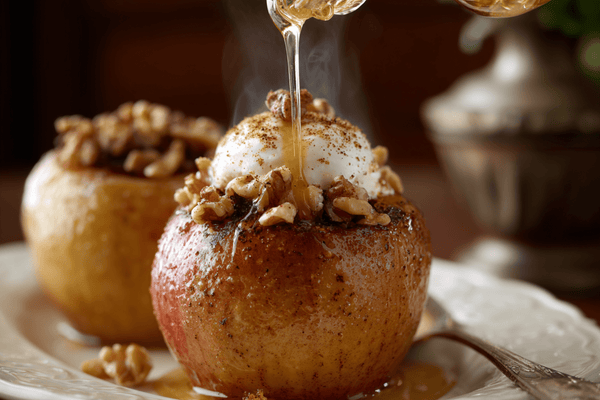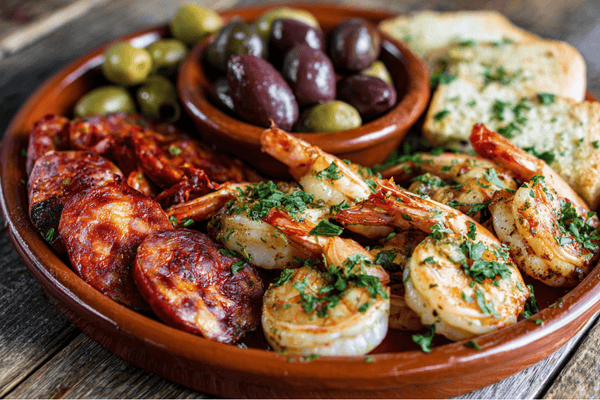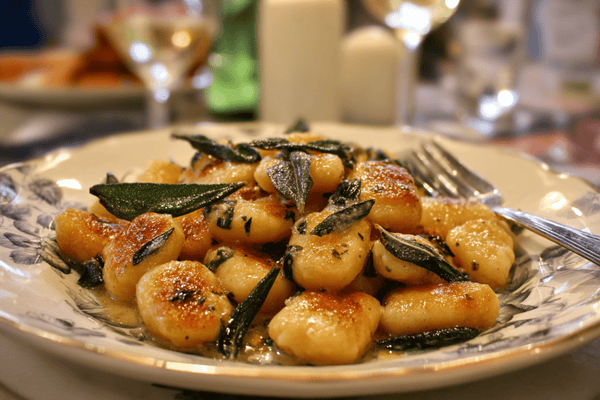
When it comes to a kitchen knife, the chef knife is the most versatile and functional knife that you can own. It doesn’t matter if you cook a few times per week at home or multiple times per day as a professional chef, the chef knife is a kitchen staple and should be a knife that everyone owns.
It may be called a chef knife but as soon as you start looking into purchasing your own, you’ll soon find that there are many popular variations of a chef knife with three of the most popular being the Kiritsuke, Santoku and Western chef knife.
The first thing to point out, before getting into this article further, is that the Kiritsuke and Santoku are the Japanese equivalent/variant of the widely popular Western chef's knife (typically German or French manufactured).
Therefore, there will be more similarities between these two knives (though not as many as you might think) when compared with the Western equivalent.
What are the best uses for a kiritsuke? Can't a chef knife be used for more-or-less any task? What's a santoku knife? In this article, we compare these three popular knives to see which is the best one, or whether or not any of them can truly be considered the best!
Table of contents
Kiritsuke vs Chef Knife vs Santoku
When comparing these three knives, the best place to start is to look at the characteristics that make up each of them. There will be similarities between the Kiritsuke and Santoku as a result of them both being Japanese knives so keep that in mind.What Is a Kiritsuke Knife?

It may be first on the list when it comes to comparisons, but in terms of popularity (or even general awareness), the Kiritsuke is a relatively uncommon chef's knife. The Kiritsuke is a close variant of the more popular Japanese chef knife, the Gyuto.
The Kiritsuke may be likened to the Gyuto but a much more accurate description would be that this knife is a hybrid between an Usuba (vegetable slicer) and a Yanagiba (sashimi knife). Its profile allows for precise slicing of both vegetables and raw fish whilst also being able to utilise a chopping technique thanks to the flat edge.
This knife is actually the most difficult to control of the three as a result of the long and thin blade with many often making reference to it looking like a miniature sword! The difficulty of use might be one of the key reasons why this is a lesser-known chef's knife, especially when compared against the much more user-friendly Santoku and Western equivalent.
** This knife is considered to be so difficult to control that in many Japanese kitchens, only the most senior head chef can actually use this knife.
The single bevel edge of these knives and relatively long blades at 10” - 12” may be difficult to use but there is a double bevel equivalent named the Kiritsuke Gyuto which is designed for Western users who appreciate the aesthetic and cutting style of this knife.
What Is a Chef Knife?

Here we will discuss the chef's knife definition and uses. A Chef knife or more commonly, Western chef's knife, is a general-purpose kitchen knife that many consider to be the workhorse of the kitchen. These knives are often the prized knife in many owners' collections and their versatility and multi-purpose use are relatively unmatched.
A Western chef knife measuring 8” - 12” in length on average will have some standard Western features that help to distinguish it from the Japanese alternatives. Firstly, the stainless-steel blade is a softer material which means it doesn’t hold as sharp an edge and the common double bevel edge will usually be ground to a 30 - 40 degree angle (though this is still sharp and not to be underrated).
As it’s a stainless-steel blade it’s often much easier to maintain, it can be soaked or placed in a dishwasher without needing to worry about it rusting, it will be easier to sharpen as a result of the softer steel (though it will need to be sharpened more frequently) and is less prone to chipping or cracking.
These knives are suitable for almost any cutting, chopping, dicing, or mincing task and they often have a thicker spine with slightly more weight in the blade to allow for use on large/dense meat and vegetables.
What Is a Santoku Knife?

The Santoku is rapidly becoming one of the most popular kitchen knives in the world and is already the most popular knife in Japanese kitchens. The word Santoku, meaning “three virtues” is another versatile and general-purpose knife.
These three virtues are translated further to mean the three uses of the knife which are cutting, slicing and dicing (though others interpret them to be the food types you can cut with this knife being meat, fish, and vegetables).
The Santoku is a unique knife. It’s quite short for a chef’s knife with an average blade length of 5” - 8” but many users actually prefer this knife because it’s easier to handle as a result. The blade has a sheep's foot design with a flat/straight edge and a rounded tip (in contrast to the squared or pointed tip that the other two knives have) which adds to its ease of use.
Santoku knives are highly customisable as a result of their popularity in both Japan and the Western world and as a result, it shares characteristics from both cultures. The carbon-steel blade is light, thin and can hold a sharp edge and it can come with a double or single bevel for home or professional use.
Which Knife is Best?
Ok, so now that we’ve looked at the characteristics of each knife it’s time to compare them in a bit more detail. Below we have produced a few key categories in order to either rank or compare each knife depending on its effectiveness, performance, or just to provide a general comparison.This isn’t an extensive list and some of it is opinion-based but we’ve put this together to give you a more visual comparison and help you decide which knife is best.
Blade Material: The Kiritsuke and Santoku will typically have a carbon-steel blade, this means they are lighter, thinner and hold a sharper edge than the stainless-steel Western knife. They are therefore good for precision work but the Western knife is much better for tough cuts and is less prone to damage or chipping.
There is not a clear winner here as the blade material will depend on your personal preference.
Size: The Santoku is the smallest and easiest knife to handle which is something many people prefer to have it for. A Western chef's knife is well-balanced for a range of cutting tasks, though some find them too long to control. The Kiritsuke is long and difficult to wield, while it’s great for long-drawn slicing you do need a certain level of skill to utilise it.
Maintenance: The high-grade material for Japanese knives is a clear disadvantage in this category. The stainless-steel Western knife is easier to clean, easier to sharpen, is less prone to chipping and is incredibly hard wearing.
By comparison, the Kiritsuke and Santoku need to be carefully maintained, are more prone to chipping and the sharpening of them requires more time and skill (especially for the single bevel Kiritsuke).
Price: All of these knives are available in similar price ranges and each has a budget, mid-priced and premium-range meaning price should not be a determining factor between these knives.
Performance: The Kiritsuke is by far the most difficult to handle of the three and is usually only handled by the most senior of chefs. Its performance might be impressive but it’s not the best considering there are few users who can actually utilise the knife.
In a head-to-head, we’d say the Santoku performs slightly better than a Western chef's knife purely for the fact that whilst they are similar knives, a Santoku is more versatile. A sharper edge allows for not only more precise cuts but its lightweight and shorter blade are easier to handle.
The Western chef’s knife does have its own advantages, the longer blade and thicker spine make this knife better suited to heavy-duty work, especially on dense foods like meat and fruits while the pointed tip allows for more finesse cutting.
Based on some of these factors we’d say it’s a closely fought battle between the Santoku and Western chef’s knife with the winner depending on what the individual wants from their knife. The Kiritsuke has some excellent characteristics but is going to be too much of a specialty (and difficult to use) knife for most people.
Final Thoughts
When it comes to the debate of the Kiritsuke vs chef knife vs Santoku we really can’t say that one is better than the other. They are all great knives in their own respective ways and the best one will really depend on what you need from your knife.If you need a workhorse for some heavy-duty cutting then the Western chef knife is ideal, for precise and versatile cutting the Santoku will be your best bet and the Kiritsuke is best suited to those looking for ultra-fine precision and is best utilised by professional chefs doing prep work with vegetables or slicing fish.
While we can’t say that one is better than the other, we can say that all three are great quality knives and either one would be a great addition to your kitchen.
FAQs
Q: Which is best, - Kiritsuke, Santoku or Chef's knife?
A: Kiritsuke, or "cleaver" knives, are designed specifically for chopping (think boneless chicken breasts), and Santoku knife's blade is easier to control for smaller items.
The most popular type of general all-purpose kitchen knife in Japan is the Gyuto, which is a cross between a Chef Knife and a Santoku Knife. The gyuto shape provides a middle-ground in handling such that it can be used to slice meats with thin slicing cuts as well as do rough chopping like vegetables. However, the gyuto is predominantly designed for use with meat, and so when it comes to vegetables and gout vs nakiri, the nakiri would be the obvious tool of choice.
Q: What is a Kiritsuke knife good for?
A: The Kiritsuke knife is a versatile, general-purpose Japanese chef's knife. It can be used to prepare ingredients for sushi, sashimi and other dishes.
The unique blade of the Kiritsuke whips through ingredients quickly and leaves clean cuts in vegetables such as daikon with little effort. However, if you are looking for a vegetable knife, we would recommend the nakiri. When it is kiritsuke vs nakiri, the nakiri is designed specifically for use with vegetables and so would be the best choice.
The blade shape is also ideal for boneless meat preparation and chopping mirepoix (the base ingredient in french cooking).
Q: What does Kiritsuke mean in Japanese?
A: Kiritsuke is a type of sushi chef knife that has a wide blade with an asymmetrical rise.
In Japanese, "kiri" refers to cutting and "tsuke" means push or stab.
Q: What size Santoku knife is best?
A: A Santoku is a Japanese chef knife and for those who are looking for something like that, a Santoku knife is best for you. Presentation wise, it doesn't cut as flawlessly as other knives. However, it's an excellent all-around knife and the perfect alternative to a western style chef's knife. If you have thinner hands then I would recommend getting one in 5 1/2" length, but if you have wider hands then 7 1/4" would be recommended.
Q: What should I look for when buying a Santoku knife?
A: First of all, Santoku knives are usually used for chopping vegetables but they can also be used to slice meats. Second, many knife manufacturers make santoku knives with blades that are longer or shorter and those variations affect the thickness of the vegetable slices. Third, consider whether you require a blade that is angled at 15 degrees or 20 degrees for more precision when mincing vegetables. Four, look out for an ergonomically designed handle because most chef knives will have a wooden handle made from laminated wood called "D-shaped" handles grip better than round handles. Additionally consider how big your hands are before purchasing one to avoid unwanted cutting accidents from poorly balanced Santokus.


